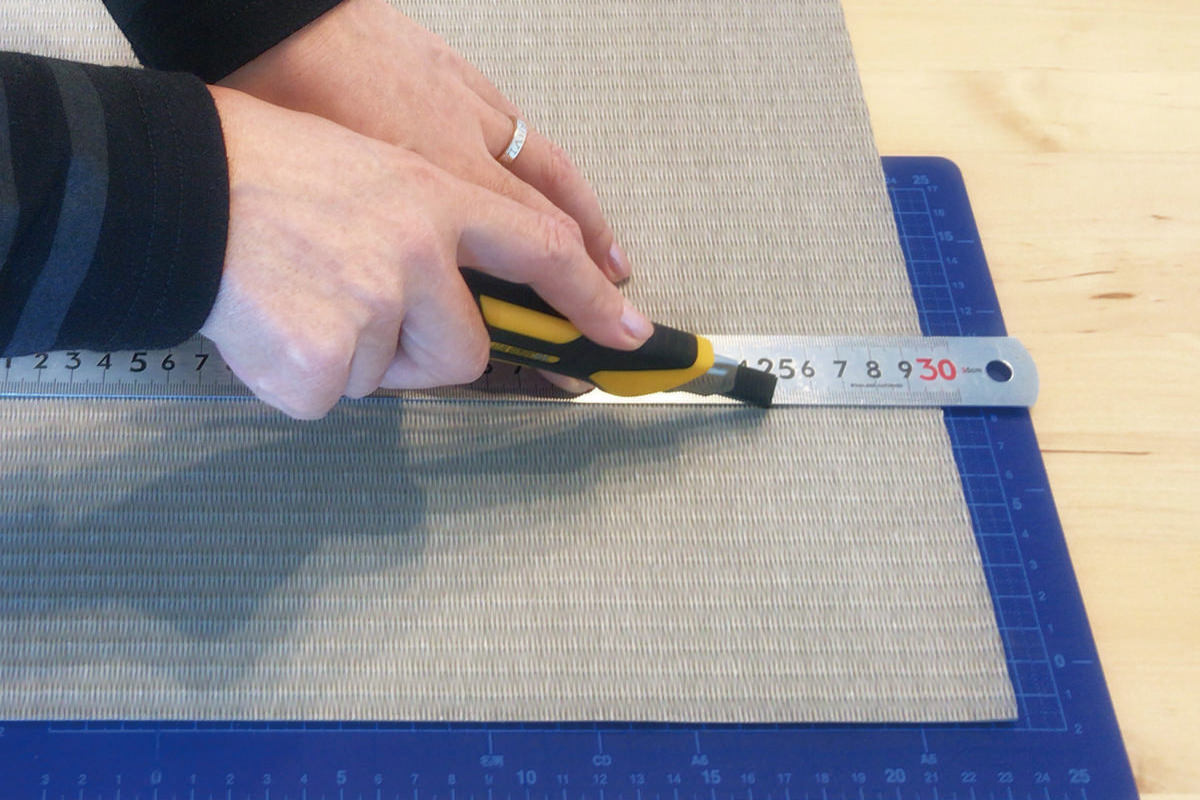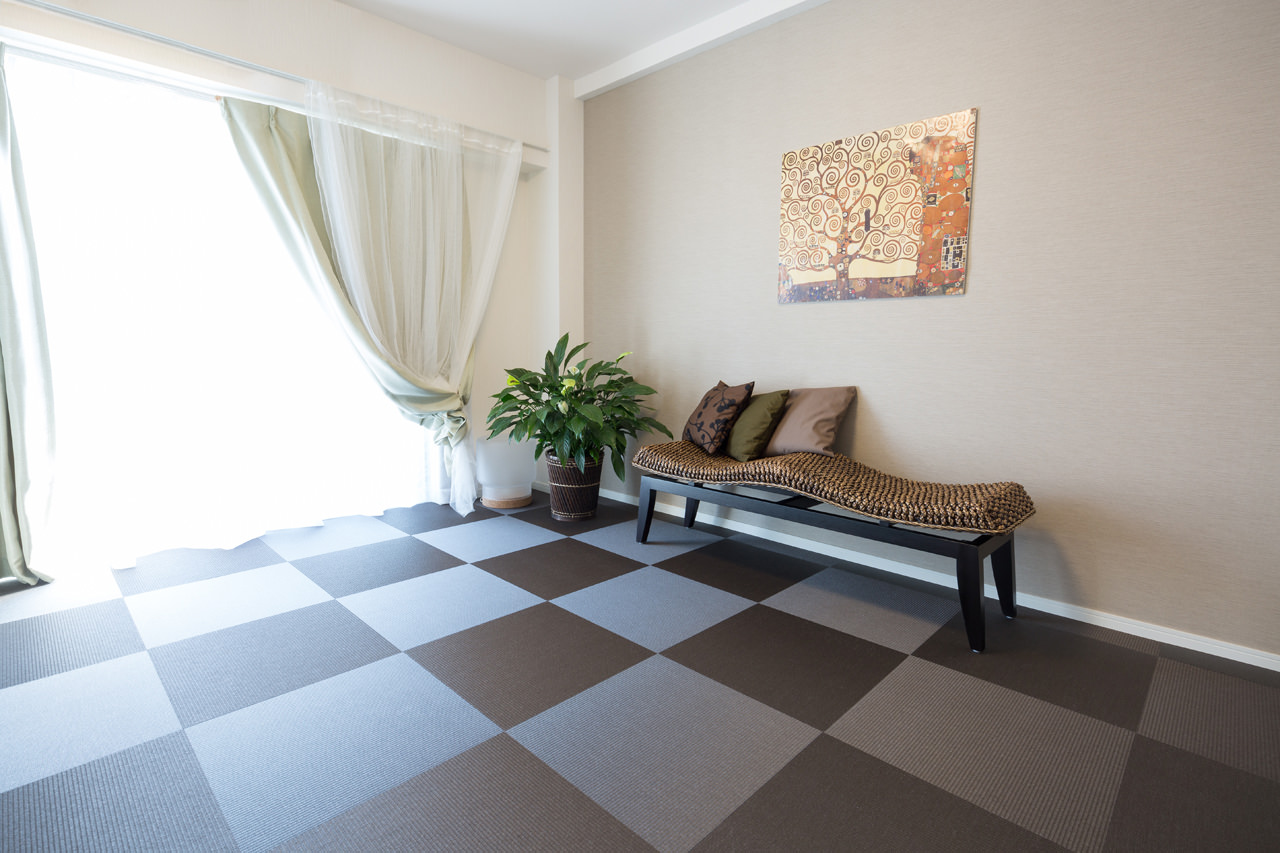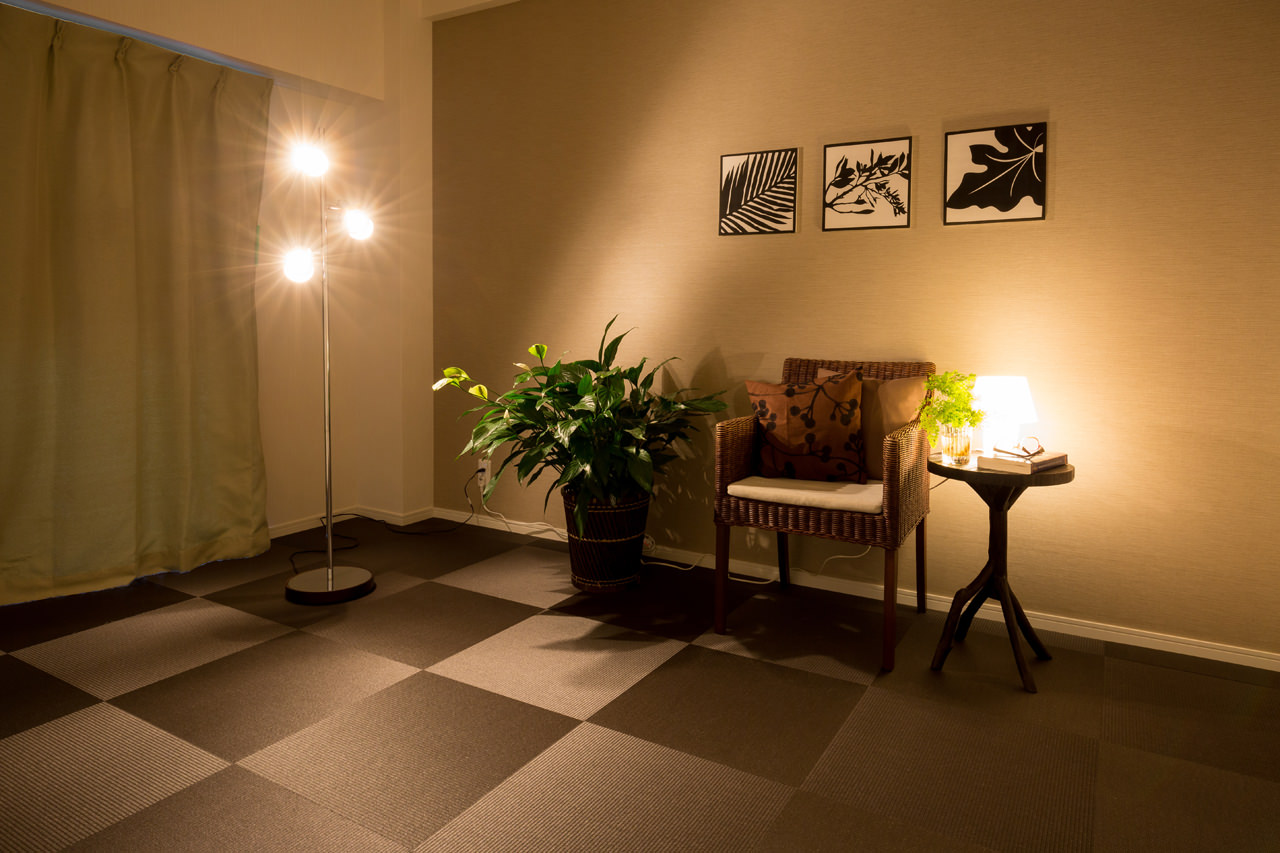japanese modern floor  ®
®
In the EU, it will be sold under the “tattamy” brand.
Flooring made specially for renovations — simply place the mats down to give a Japanese modern look
Start renovating your rooms with flooring today!

Remove the sheet from the reverse side

and simply stick it in place (no glue needed)

For corners and other spaces…

Simply cut

and simply stick it in place

and finish your renovations!

Safety
- These mats are hygienic and prevent the occurrence of mites and mold.
- The mat covers are compliant with the Food Sanitation Act and deemed safe.
- They produce no toxic gases even in the case of when burned.
- They can be safely used in nursing environments, with children, the elderly and those suffering from allergies.
- They are optimal for highly air tight homes.
- Only carefully-selected raw materials sourced in Japan are used to manufacture this product in Japan.
Durability
- They have been developed for institutional purposes and are extremely strong, tough and long-lasting.
- They are difficult to scuff and can be wiped using a damp cloth, making cleaning easy.
- They are resilient against humidity and warping.
- They do not fade in the sun, and no color variation will occur when one mat is swapped out for another in the future.
- The best form of natural soft rush straw mats is recreated to provide these mats with longevity.
- They have 40 times the wear and tear resistance of a natural soft rush straw mat.
- They are water repellent, and any spilled drinks or food can be wiped up easily with no stain remaining.
Stylish and comfortable
- They have a beautiful appearance and provide an air of luxury.
- There is a rich variety of colors that can be matched with Western or Japanese décor.
- The modern Japanese design can go with Western or Japanese furniture.
- They have a natural texture with little shine.
- Despite being thin mats, they offer a surprising amount of cushion.
- They are made of materials and structured in a way that’s easy on skin making them comfortable in any season.
- They feel good under the feet and to the hands, and are smooth to the touch in summer, but not cold in the winter.
- They are thin mats, and don’t require any adjustments in floor height to be installed.
- They also allow wheelchair-accessible casing beads to be easily installed.
- Rich experience installing over 100 thousand mats annually
- Wide-variety of deliveries to ryokans and hotels (over 7,500 locations)
- Wide-variety of deliveries to kindergartens, nursery schools and nursing homes (over 5,000 locations)
Size variation
 300mm x 300mm Thickness of 3mm (Wheelchair-accessible type) Thickness of 5mm (Cushioned type) |
 450mm x 450mm Thickness of 3mm (Wheelchair-accessible type) Thickness of 5mm (Cushioned type) |
 900mm x 900mm Thickness of 3mm (Wheelchair-accessible type) Thickness of 5mm (Cushioned type) |
Specifications
Cover materials: Polypropylene, calcium carbonate
Base material: Polyester
Underside material: Absorbent acrylic
Special characteristics
Does not fray when cut (patented)
Flame retardant

| Patent number | #6829455 #5978412 |
| Flameproof capacity test number | E1160168 (3mm) E1160204 (5mm) |
Exempted from public notice (construction material not containing formaldehyde)
Physical properties
Formaldehyde emission test |
JIS A1901:2015 (Small chamber test) | Chemicals Evaluation and Research Institute, Japan | |
| Chemical analyzed | Atmospheric concentration | Emission speed |
|---|---|---|
| Formaldehyde | < 3㎍/m3 | < 3㎍/m2 |
Evaluation results: Atmospheric concentration and emission speed are within performance standards, and product ranked F☆☆☆☆ equivalent.
Wear and tear resistance test |
JIS A1453 Material mass change measured with wear test on construction materials and construction components (abrasive paper test) Test load: 5.20N Rotation: 500 rotations; 1,000 rotations |
Japan Testing Center for Construction Materials | |
| Units | TARTEC | General plastic floor sheet | |
|---|---|---|---|
| Wear mass | g/500 times | 0.168g | |
| g/1000 times | 0.294g | 0.5g |
Slip test |
JIS A1454 (Polymer type flooring material test) 17 Slip test | Japan Testing Center for Construction Materials | |
| Slip surface | Test direction | Maximum pull load (N) | Slip resistance coefficient |
|---|---|---|---|
| Rubber sheet | vertically (along tatami weaving) | 550 Pmax | 0.70 C.S.R |
| laterally (perpendicular to tatami weaving) | 586 Pmax | 0.75 C.S.R | |
| Socks | vertically (along tatami weaving) | 280 Pmax | 0.36 C.S.R |
| laterally (perpendicular to tatami weaving) | 332 Pmax | 0.42 C.S.R |
Sunlight resistance test |
JIS L0842 (Test of color durability against UV ray carbon arc lamp) | Chemicals Evaluation and Research Institute, Japan | |
| Test material | Natural tatami cover | TARTEC | |
|---|---|---|---|
| Color change (gradation) | After 50 hours exposure | 2 (Somewhat of a color change) | 5 (No color change) |
| After 100 hours exposure | 1 (Significant color change) | 5 (No color change) |
Test of electrostatic properties |
JIS A1455 | Kaken Test Center | |
| U value | 2.0 Grade III (U value 1.2—3.2 Little static electricity produced, and of a standard where static electricity can be prevented) |
|---|




